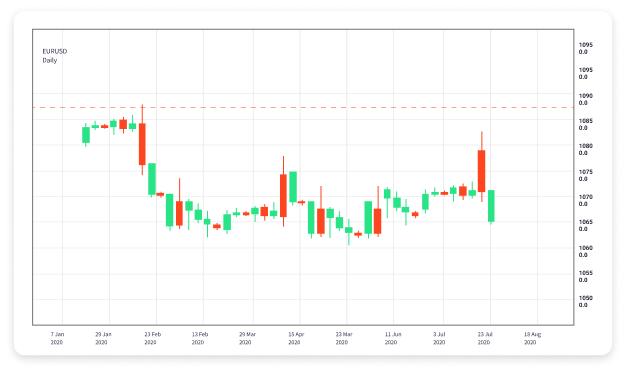
Beginner’s Guide to Forex Trading: How to Start Your Journey
Forex trading, or foreign exchange trading, is the act of buying and selling currencies to make a profit. It is one of the most popular forms of trading in the world due to its high liquidity and accessibility. For beginners, the world of forex can seem daunting, but with a solid foundation in understanding the market and following a structured approach, anyone can learn to trade successfully. If you’re looking for resources and tools to enhance your trading experience, consider checking out beginner forex trading Trading Brokers in Vietnam, where you can find a variety of trading platforms and brokers tailored for your needs.
Understanding the Basics of Forex Trading
The foreign exchange market is a global decentralized or over-the-counter market for trading currencies. It’s the largest financial market in the world, with daily trading volumes exceeding $6 trillion. Unlike stock markets, forex trading has no central exchange; instead, transactions occur electronically over-the-counter (OTC), which means that trades are executed through a global network of banks and financial institutions. This decentralized structure contributes to the market’s high liquidity and reliability.
Key Terminology in Forex
Before diving into trading, it’s crucial to familiarize yourself with commonly used terminology in forex:
- Currency Pairs: Currencies are traded in pairs, for example, the EUR/USD (Euro/US Dollar). The first currency is the base currency, and the second one is the quote currency.
- Spread: The spread is the difference between the bid (selling) and ask (buying) prices. It’s how brokers make money.
- Pips: A pip is the smallest price move that a given exchange rate can make. It is usually the fourth decimal place in a currency pair.
- Leverage: Leverage allows traders to control a larger position with a smaller amount of capital. It can amplify both profits and losses.
- Margin: Margin is the amount of money required to open and maintain a leveraged position.
Choosing a Forex Broker
Choosing the right forex broker is one of the first critical steps for any beginner trader. A good broker should offer a user-friendly platform, a variety of currency pairs, competitive spreads, and reliable customer service. Research is key. Look for brokers that are regulated by reputable authorities, as this ensures a level of security for your funds. You may also want to read reviews and compare features before making your decision.
Setting Up a Trading Account

Once you’ve chosen a broker, you’ll need to set up a trading account. Most brokers offer different types of accounts, including demo accounts for practice and live accounts for real trading. A demo account allows you to familiarize yourself with the trading platform and test your strategies without risking real money. After feeling comfortable with the trading environment, you can transition to a live account.
Basic Trading Strategies
For beginners, starting with a simple trading strategy is essential. Here are a few strategies to consider:
- Scalping: A strategy focused on making quick trades to take advantage of small price movements. Scalpers might make multiple trades within a single day.
- Day Trading: This strategy involves buying and selling assets within the same trading day. Day traders aim to capitalize on short-term price movements.
- Swing Trading: Swing traders hold positions for several days or weeks, aiming to profit from expected upward or downward market shifts.
- Position Trading: This long-term strategy involves holding trades for several weeks, months, or even years based on fundamental analysis.
Risk Management in Forex Trading
Effective risk management is crucial for survival in forex trading. Here are some vital practices to implement:
- Set Stop-Loss Orders: Always use stop-loss orders to limit potential losses on each trade. This safeguards your capital.
- Define Risk-to-Reward Ratio: Before entering a trade, establish a clear risk-to-reward ratio. A common expectation is 1:2 or 1:3, meaning you stand to gain two or three times what you risk.
- Diversify Your Portfolio: Avoid concentrating all your investments in one currency pair. Diversifying across different pairs can reduce risk.
- Never Risk More Than You Can Afford to Lose: Only invest what you can afford to lose, and avoid trading on emotions.
Developing a Trading Plan
A well-defined trading plan can significantly enhance your chances of success. Your plan should include your goals, trading strategies, risk management practices, and performance evaluation criteria. Assess and adjust your plan regularly based on market changes and your trading performance.
Continuous Learning and Improvement
Forex trading is an ever-evolving field, and continuous learning is vital to stay ahead. Read trading books, attend webinars, and participate in trading forums to grow your knowledge. Additionally, analyze your trades regularly to identify strengths and areas for improvement. The more you learn and adapt, the better you will become at forex trading.
Conclusion
Entering the forex market can be an exciting journey filled with opportunities, but it’s essential to approach it with knowledge and a solid strategy. By starting with the basics, choosing a reliable broker, implementing effective risk management, and continuously refining your skills, you can develop a successful trading career. Remember that patience and discipline are key; success in forex trading doesn’t come overnight, but with persistence and determination, you can achieve your trading goals.

